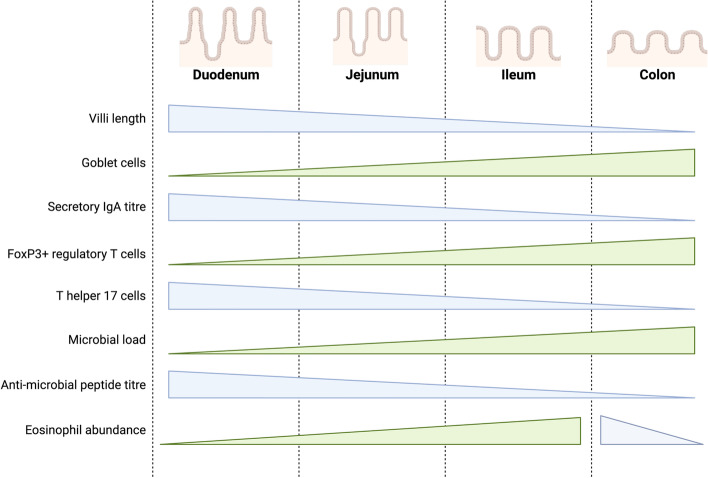Fig. 1.
Regional specificity of selected immune and microbial components in the gastrointestinal tract. There is a distinct variation in the abundance of immune and microbial factors that mediate homeostasis in conjunction with physiological function throughout the small intestine and colon. Because of the role of the small intestine in nutrient absorption, the proximal segments (duodenum and jejunum) have longer, finger-like villi to increase the available surface area. The distal small intestine, the ileum, has shorter villi. Functionally, the colon primarily reabsorbs water and processes unabsorbable waste as faeces for elimination and does not have the finger-like projections of the small intestine. In the colon, immune homeostasis is primarily focused on tolerating the high commensal burden. As such, there is a higher abundance of Th type 17 cells in the duodenum that decreases towards the distal colon, corresponding with an inverse abundance of FoxP3+ regulatory T cells. Nutrient absorption capacity is greatest in the duodenum and decreases towards the colon. This corresponds with the small intestinal immune systems focus on oral tolerance to food antigens and production of anti-microbial peptide production and secretory IgA. Eosinophils are a normal constituent of the gastrointestinal tract. Their abundance increases towards the distal small intestine, peaking in the terminal ileum and proximal colon before decreasing towards the rectum [15–18]. The image was created using BioRender.com

